Keep & breed gourami successfully
Threadfin fish are very specific labyrinth fish that are characterized by their elongated, thread-like pelvic fins. As labyrinth fish, they breathe surface air with their labyrinth organ, which functions much like a lung. In addition, however, they have thread fins in common. These long filamentous fins serve as the gourami's organ of touch and smell, and it is super to watch these beautiful fish thoughtfully search for their way while extremely actively groping with the fin rays of the thin fin filaments. Even when two gourami meet, the fins come into play and they feel each other out thoroughly and "sniff" each other. If a thread breaks off, it usually grows back again. Nevertheless, one should get to the bottom of the matter and, for example, exclude fin rot or treat it.
In the following, you will find information that applies to all gourami in aquaristics - on aquarium setup, food, water values, breeding and reproduction, and socialization. The special features for the individual species are then given in the short portraits. If you click on the store links of the headlines ("buy"), you will get to our detailed store pages, where you will also find the information again .
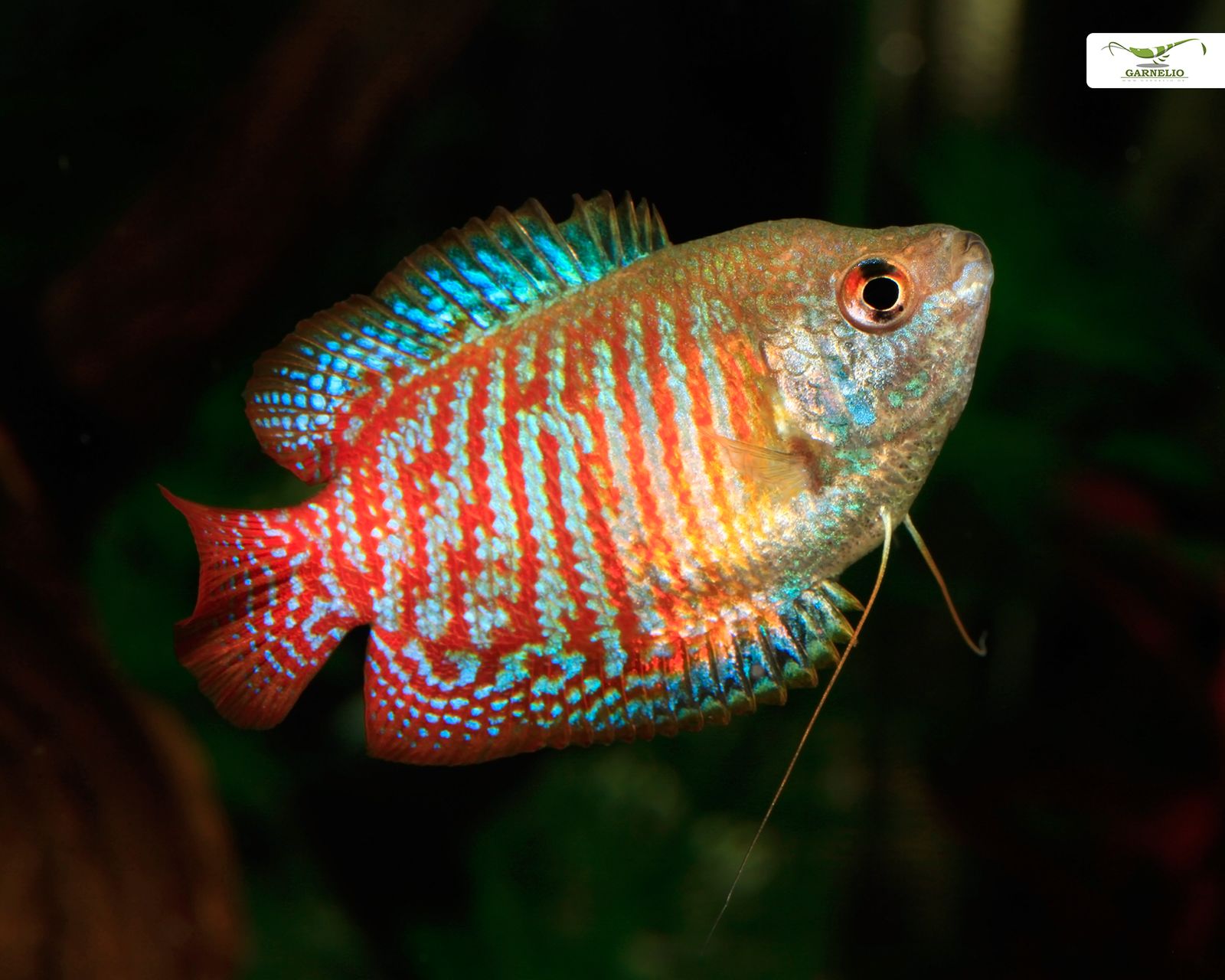
The genera
There are two genera of gourami: the Western gourami from South Asia (India and Myanmar), and then the Eastern gourami from Southeast Asia. The Eastern Threadfishes are partly used for human food and therefore have been settled throughout Southeast Asia. A synonym to the genus name Trichogaster is the also often heard genus name Trichopodus. Dwarf gourami were formerly referred to as the genus Colisa. They are now also listed as Trichogaster.
The habitat
Most species of gourami live in floodplains and shallow shorelines with moderate currents, and they also like to live in weedy waters with a strong plant growth and usually with a muddy substrate. They also feel very comfortable in the aquarium with moderate current and good marginal planting. Often you can see the beautiful gourami wriggling through the plants. In the open water they swim also gladly once in the swarm.
Water values
Gouramis are not so sensitive to water values, but they have different requirements depending on the species. Especially the Dwarf Gourami needs softer water. See the brief portraits below for specific info.
Breeding and reproduction in the aquarium
All gourami have a very typical way of reproduction: the males build foam nests on the water surface, preferably between floating plants. To do this, the male gourami secrete a spittle-like secretion with which they coat air bubbles and string them together until an impressive foam nest has formed. Species of the genus Trichopodus additionally hide plant parts here to make the whole thing more stable. During this time the fish are highly territorial and very prone to disturbance. Work on the aquarium that is not absolutely necessary should now be postponed.
The male stands under the foam nest and courts the female. Mating takes place directly under the nest: The male thereby entwines the female, who gradually ejects up to 1000 eggs, which the male fertilizes in the water by ejecting sperm. Thanks to their oil content, gourami eggs have a lower specific gravity than water and therefore float to the water surface, where they land directly in the foam nest. After mating and spawning, the female swims again its way, while the male performs brood care and guards the eggs. In the aquarium, the female can then be removed from the spawning tank to minimize stress to the male.
If predators are present in the community aquarium, the foam nest can be carefully transferred with a large soup spoon etc. to a specially set up rearing aquarium (filtered, moderate current, well planted).
Depending on the water temperature, the fish larvae hatch after about 1-2 days. Their very large yolk sac feeds them well and gives them buoyancy. Any larvae that fall out of the nest are collected by the father fish and spat back into place. The young fish grow quickly and begin to swim freely after only three to five days. Then they also eat on their own. The male's brood care instinct ceases as soon as the young have left the nest - at the latest then the father fish should also be removed from the aquarium so that he does not eat his offspring. If there are enough fine finned plants and water plant cushions on the water surface (for example Riccia), some fry will also come up in the community aquarium with a little luck.
The fry will grow up quickly with freshly hatched Artemia nauplii, Cyclops and micro worms. Later you can switch to larger live food and also to flake food for omnivorous aquarium fish.
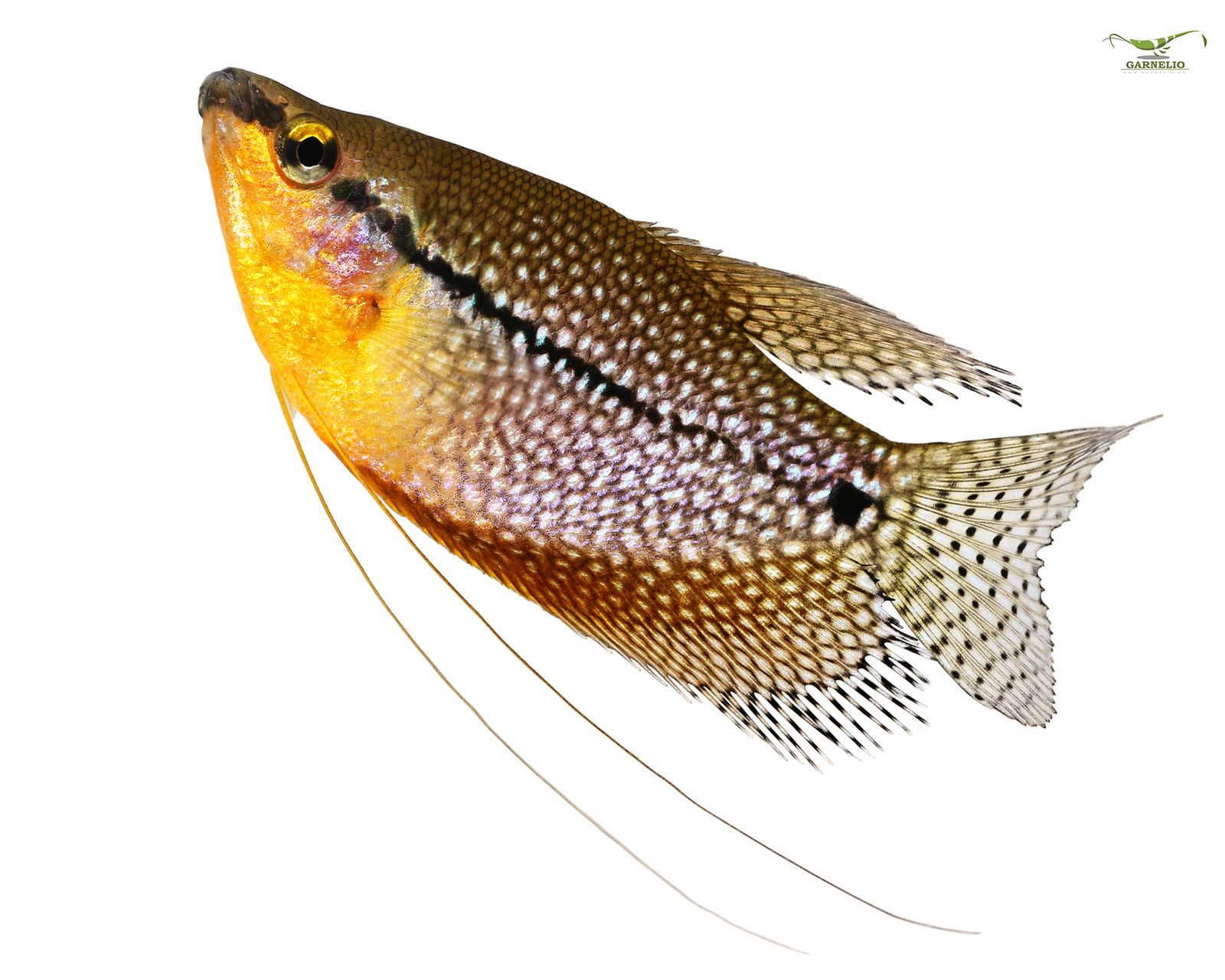
Socialization
Gouramis are basically rather calm fellows, but can become quite rough during mating season. Problems can arise with aggressive or territorial fish, especially then. Also other gourami species are then driven away. However, the socialization works well with peaceful smaller fish such as guppies, carps, characins or danios, and also with fish that inhabit other water zones than the surface-oriented gourami, for example with catfish. Even the larger gourami do not actively prey on dwarf shrimp, so they can be kept very well with them in a community aquarium. Crayfish, on the other hand, can severely injure the sensitive gourami fins, so we do not recommend keeping gourami with crayfish or dwarf crayfish.
Special feature Dwarf Gourami
Dwarf Gouramis are considered to be quite vulnerable. Experiments have shown that overwintering at cooler temperatures (20-24 °C) and at a low water level (15-20 cm) makes the fish much more robust and long-lived and also stimulates the willingness to reproduce.
Food
Threadfish are omnivores. While they are very happy to eat frozen food and live food of suitable size, they also take flake food and granulated food. Since gourami tend to be surface oriented, you should make sure that the foods are suspended for as long as possible. They also like to pluck algae coverings, and the larger gourami will even eat duckweed. Also some blanched spinach or similar soft green food is eaten very gladly.
In the following, we would like to take a closer look at some particularly beautiful and popular gourami species for the aquarium.
Eastern gourami
Blue gourami - Trichogaster trichopterus(buy)
From Southeast Asia. Grows large to Soft to hard water, a water temperature of 22 to 28 °C and an aquarium with an edge length of 120 cm or more. Grows to 13-15 cm long and up to 10 years old. Omnivorous, also eats troublesome algae coverings and duckweed. Males somewhat territorial, pair keeping is recommended.
Water values: GH 5 to 19, KH 3 to 15, pH 6 to 7.8, temperature 22 to 28 °C
Marble Gourami - Trichogaster trichopterus(buy)
From Southeast Asia. Soft to hard water, water temperatures of 22 to 28 °C and a tank with 120 cm edge length or more. Body length 13-15 cm, age expectancy up to 10 years. Omnivore, takes care of annoying algae coverings and even duckweed. Males somewhat territorial, pair keeping is recommended.
Water values: GH 5 to 19, KH 3 to 15, pH 6 to 7.8, temperature 22 to 28 °C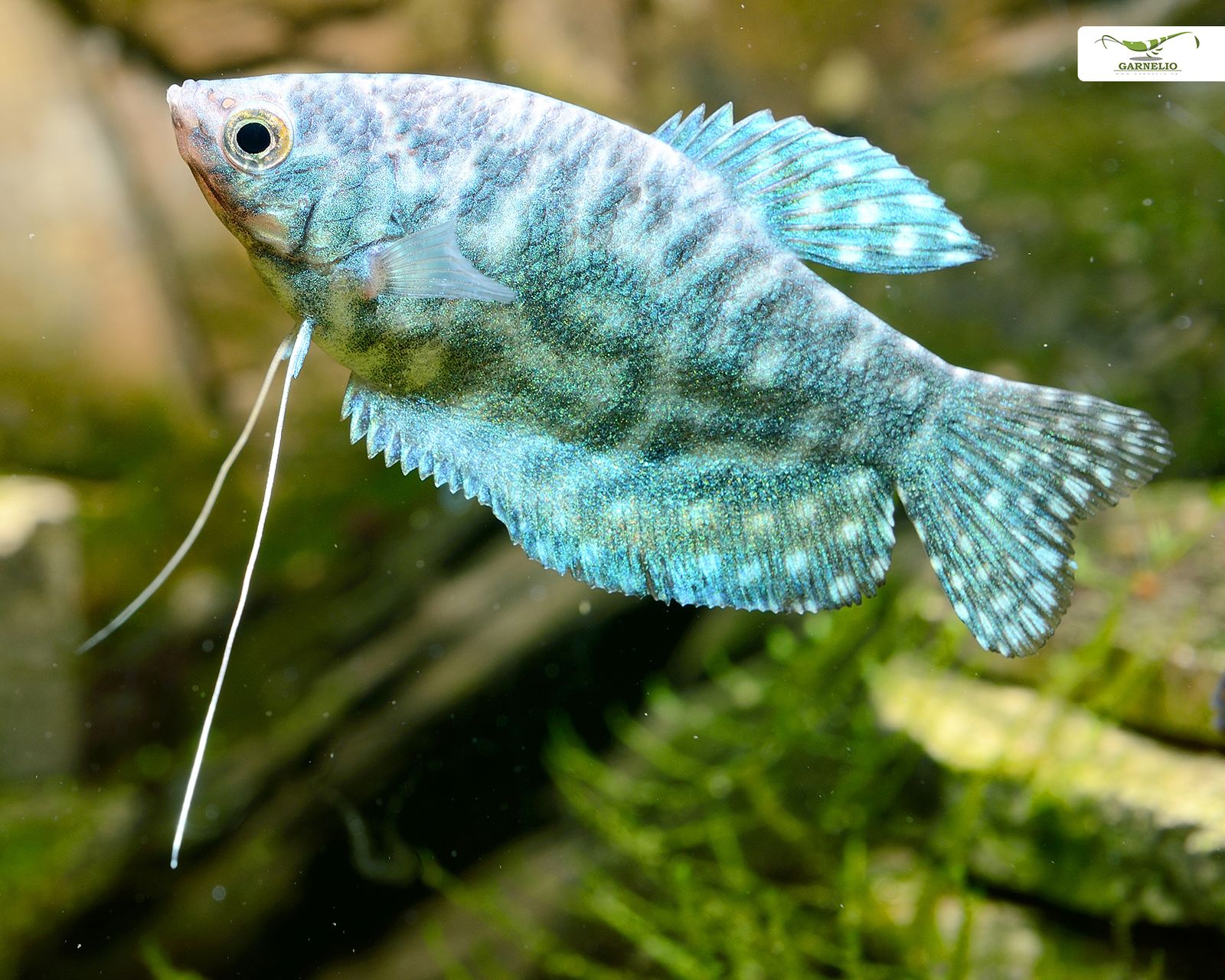
Marble Gourami gold-orange - Trichogaster trichopterus(buy)
From Southeast Asia. Soft to hard water, water temperatures should be 22 to 28 °C . Aquarium with 120 cm edge length and above. Size 13-15 cm, life expectancy about 10 years. Omnivore, also feeds on annoying algae coverings and even duckweed. Males somewhat territorial, pair keeping is recommended.
Water values: GH 5 to 19, KH 3 to 15, pH 6 to 7,8, temperature 22 to 28 °C
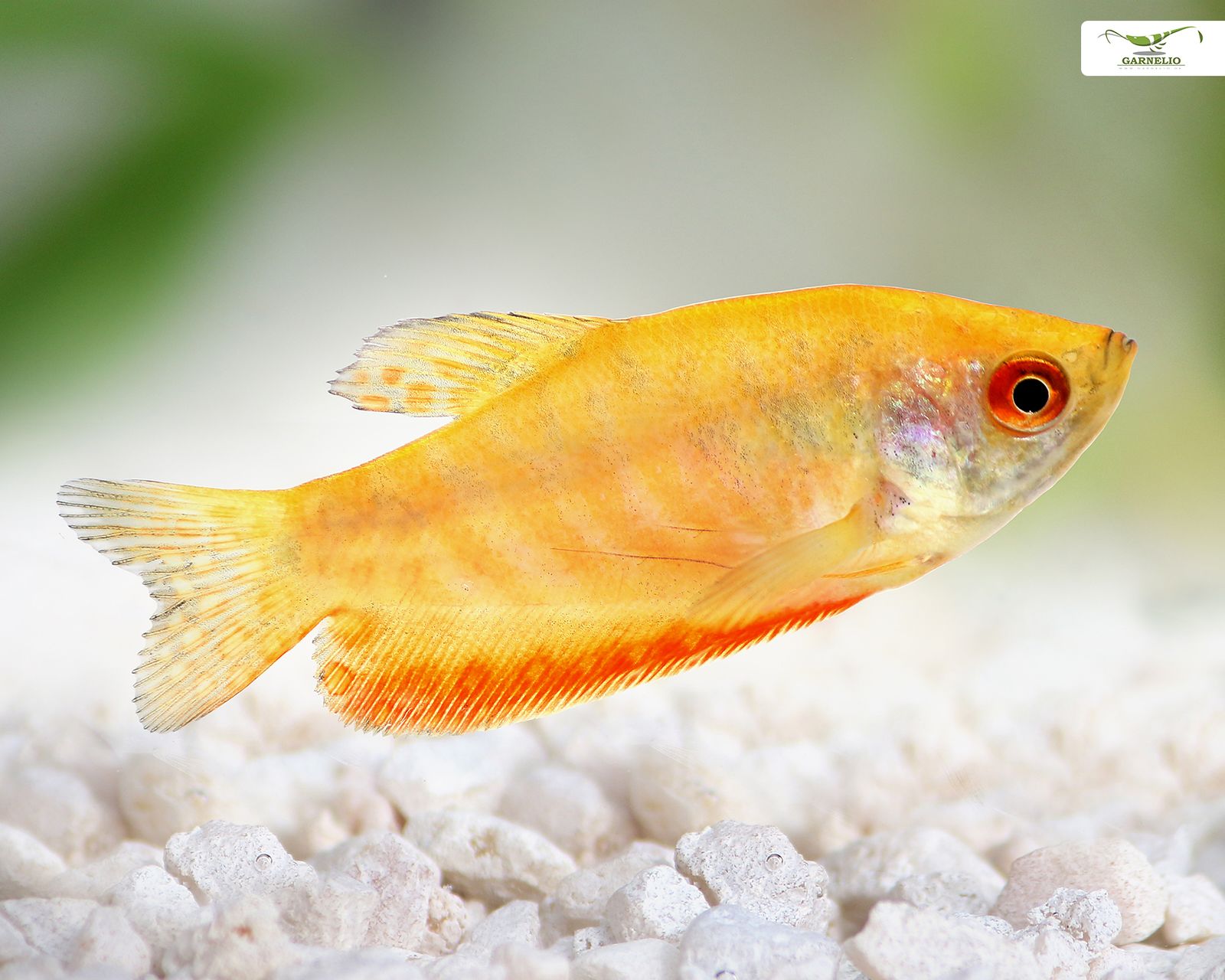
Mosaic Gourami - Trichopodus leeri(buy)
From Southeast Asia. Soft to medium hard water, 25-28 °C. Relatively compatible gourami, group keeping possible. Body length 10-12 cm, life expectancy approx. 10 years. 3-4 animals in a 100 cm aquarium, 5-10 in a 130 cm tank. Keeping in pairs is also possible. Omnivore, algae eater, also cares for duckweed.
Water values: GH up to 12, KH 6 to 7,5, pH 6 to 8, temperature 25 to 28 °C
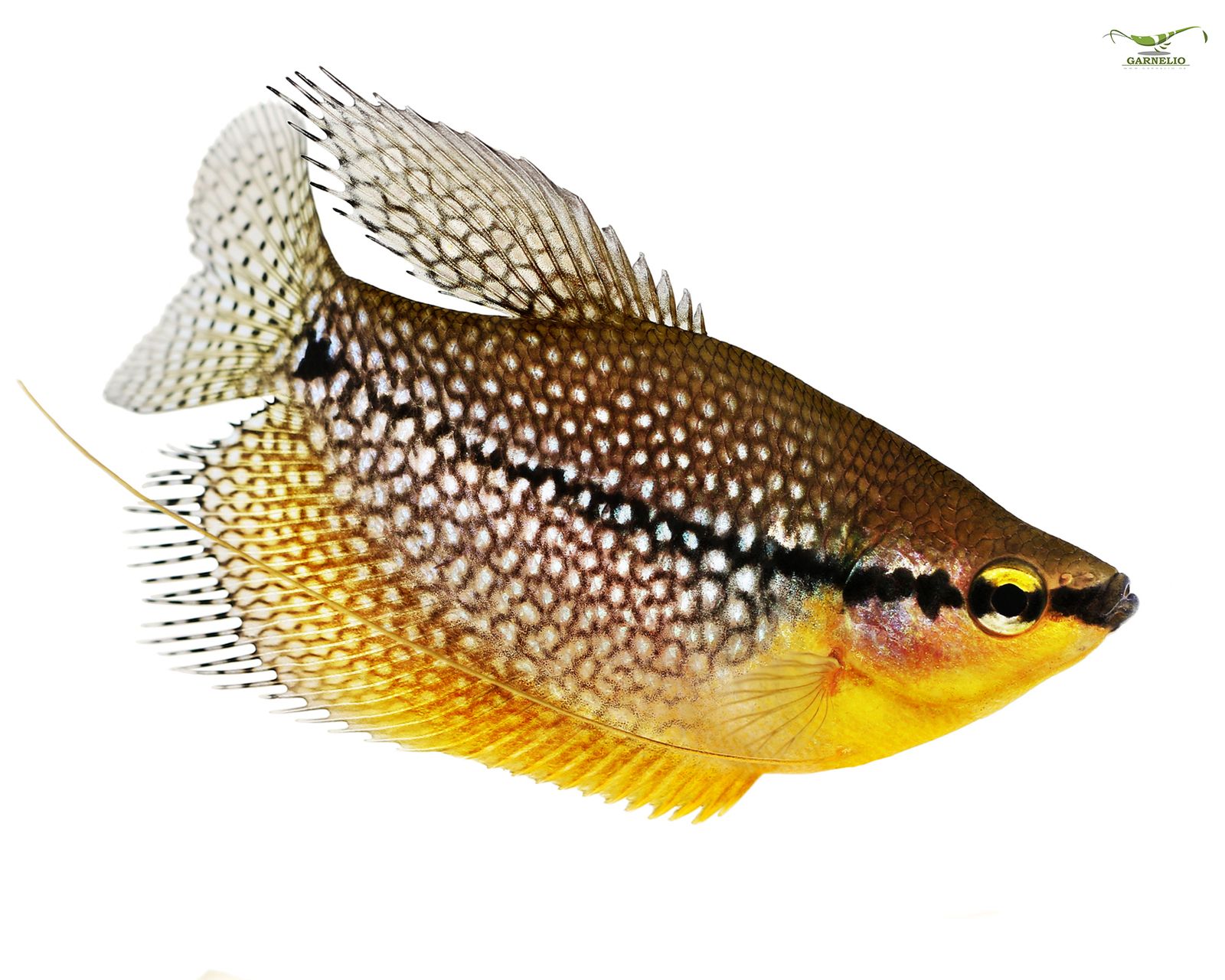
Western gourami
Dwarf Gourami - Trichogaster lalius (Colisa lalia)(buy)
From South Asia. Remains quite small with up to 6 cm body length. Considered quite sensitive and therefore should be kept with seasonal variations in water temperature and water level, in winter at cooler temperatures (20-24 °C) and low water level (15-20 cm), in summer at 24-30 °C and higher water level. Good water quality is mandatory, humic substances help to stay healthy. One pair can be kept already in an aquarium with 60 cm edge length. Omnivorous, algae eater.
Water values: GH up to 15, KH up to 8, pH 6 to 8, temperature 24 to 30 °C
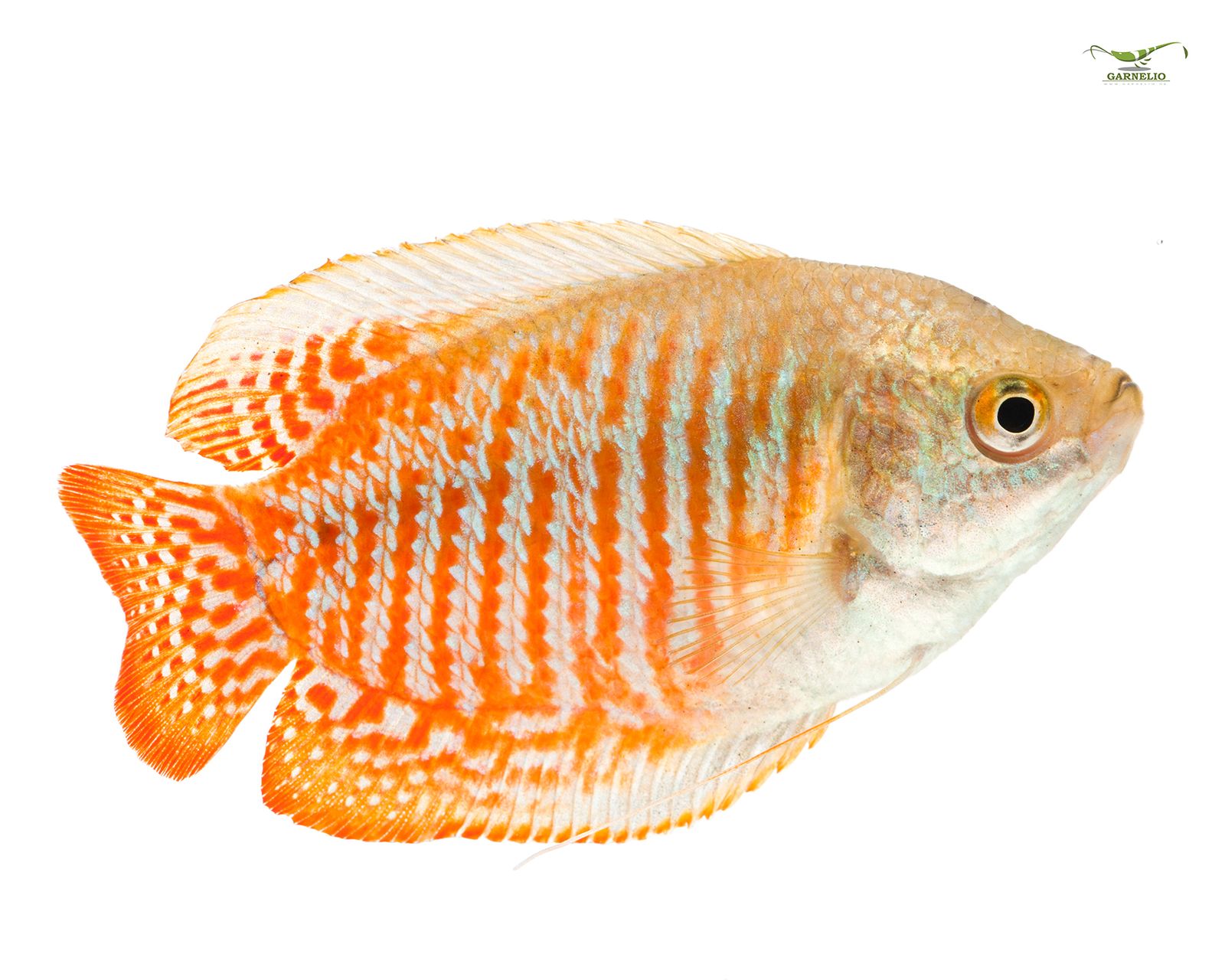
Blue Dwarf Gourami - Trichogaster lalius (Colisa lalia)(buy)
From South Asia. Relatively small with a body length of about 6 cm. Quite sensitive, needs cooler temperatures (20-24 °C) and a lower water level (15-20 cm) in winter, 24-30 °C and higher water in summer. Good water quality is mandatory, humic substances as well. A pair can be kept already in an aquarium with 60 cm edge length. Omnivorous, also nibbles algae coverings.
Water values: GH up to 15, KH up to 8, pH 6 to 8, temperature 24 to 30 °C
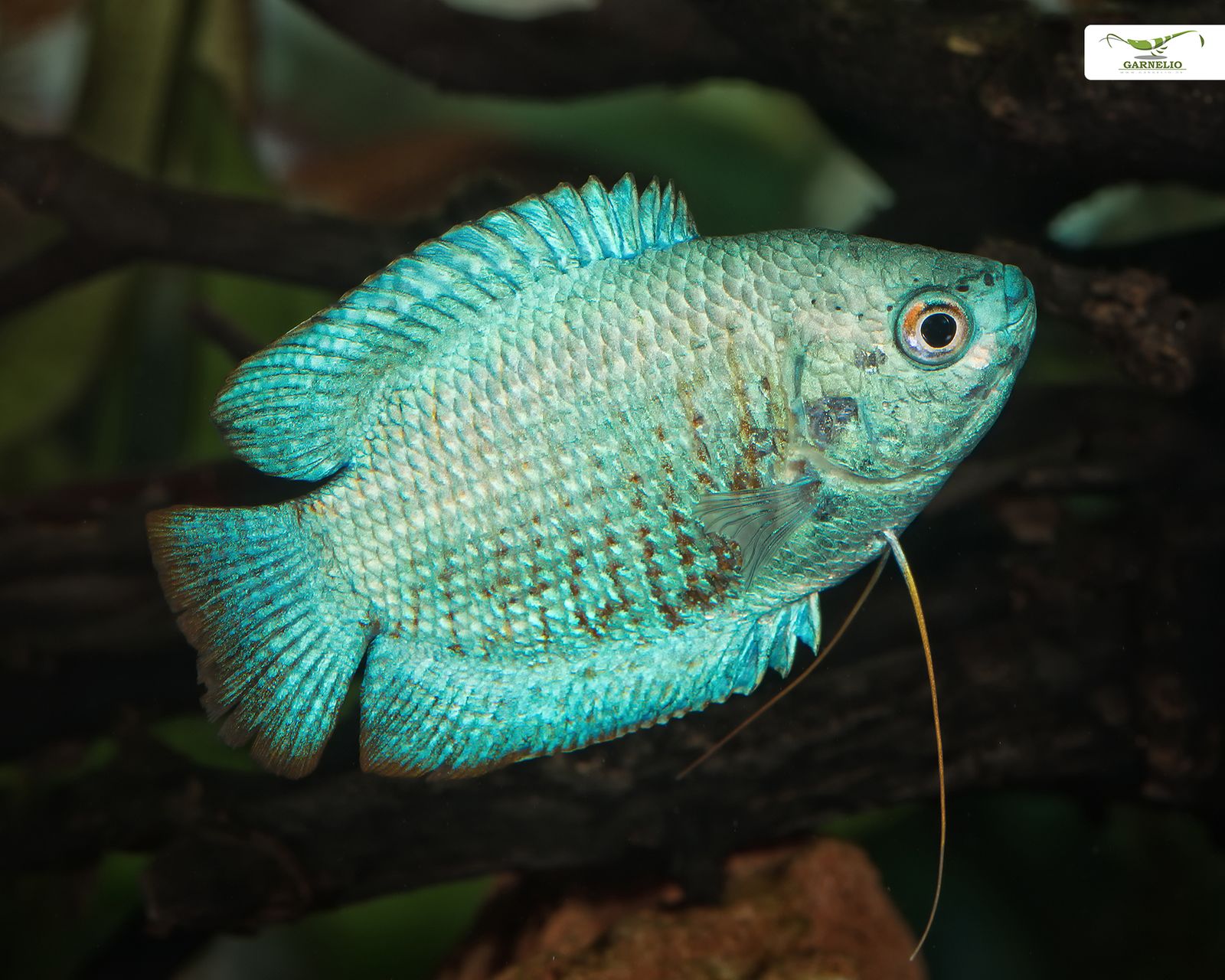
Red Dwarf Gourami - Trichogaster lalius (Colisa lalia)(buy)
Red breeding form of the Dwarf Gourami from South Asia. Remains small, only about 6 cm body length. Somewhat sensitive, prefers lowered temperatures (20-24 °C) and a deeper water level (15-20 cm) in winter, 24-30 °C and a higher water level in summer. Good water quality is a must, as well as humic substances. Prefers soft water. A pair can be kept already in an aquarium with 60 cm edge length. Omnivorous, also nibbles algae coverings.
Water values: GH up to 15, KH up to 8, pH 6 to 8, temperature 24 to 30 °C
Honey Gourami - Trichogaster chuna (Colisa chuna)(buy)
From India and Bangladesh. With about 5 cm body length one of the smallest gourami in the hobby. Does not like strong currents, lives in nature in rice fields and other stagnant waters. A pair is already suitable for an aquarium with 60 cm edge length. Carnivore.
Water values: GH 10-20 dGH, KH 0-8° dKH, pH 6.5-7.2, temperature 22-28° C
Golden Honey Gourami - Trichogaster chuna "gold" (Colisa chuna)(buy)
Color form of the honey gourami from India and Bangladesh. Lives in rice fields and stagnant waters. One of the smallest gourami, only about 5 cm body length. Prefers mild current. A pair can be kept already in an aquarium with 60 cm edge length. Carnivores.
Water values: GH 10-20 dGH, KH 0-8° dKH, pH 6.5-7.2, temperature 22-28° C
